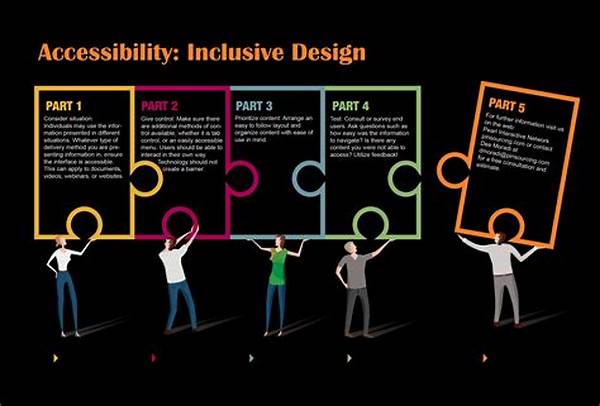Inclusive Data Representation Strategies
In today’s data-driven world, access to comprehensive and inclusive data representation strategies is not just advantageous; it’s essential. As businesses increasingly rely on data to make informed decisions, the need to accurately represent the diverse demographics and needs of their audiences has never been more critical. Imagine crafting marketing strategies blindfolded, relying on outdated, incomplete, or skewed data—it’s a disaster waiting to happen. This makes the inclusion of diverse data not just a moral imperative but a strategic necessity.
Inclusive data representation strategies empower companies to delve into rich, varied datasets that encompass different backgrounds, perspectives, and cultures. This holistic view is crucial for developing products and services that truly resonate with a broad audience. It allows businesses to predict market trends more accurately, develop empathetic customer service approaches, and engage in meaningful community initiatives. By overlooking the importance of such inclusivity, companies risk alienating large sections of the population, which could result in both reputational damage and financial loss.
But what exactly are these inclusive data representation strategies, and how can they be effectively implemented? We need to dive deeper into understanding the framework that makes inclusion more than just a buzzword. With numerous methods available, such as ensuring diverse datasets, applying unbiased algorithms, and continuously auditing data processes, there’s no one-size-fits-all solution. However, the key lies in innovation and adaptation, with a focus on ongoing learning to keep abreast of emerging trends and technologies. As we navigate through this article, let’s unravel the tapestry of inclusive data representation and reveal its significant impact on modern business strategies.
The Impact of Inclusive Data Representation Strategies
Moving forward into the interconnected world of data, businesses must adapt or risk being left behind. The transformative potential of inclusive data representation strategies cannot be overstated. By embracing diversity in data, companies not only adhere to ethical practices but also unlock new pathways for innovation. Imagine a world where every marketing campaign speaks directly to the needs and desires of each individual. This is the promise held by inclusive data strategies.
Companies implementing these strategies report higher levels of customer satisfaction and retention. One key element is the ability to see beyond surface issues, identifying trends and patterns that remain invisible in homogenous datasets. Embracing diverse data provides a competitive edge by anticipating and leveraging market shifts. Critically, customers feel seen and heard, fostering loyalty and advocacy that drives growth.
However, the path to truly inclusive data strategies is not without its challenges. Companies must invest in training and employing diverse teams capable of interpreting this data accurately. Furthermore, technology plays a crucial role; implementing AI and machine learning models that recognize and eliminate bias is critical. The journey requires dedication and evolution, ensuring strategies remain relevant and effective. As businesses continue down this path, they become not only data-driven but data-empowered, capable of achieving incredible breakthroughs.
Building Bridges with Inclusive Data Techniques
Inclusive data representation strategies are akin to building bridges that bring together different segments of consumers under one brand umbrella. The beauty of this approach lies in its ability to harness the power of varied insights, encouraging collaboration and unity. Through a mixture of quantitative and qualitative methodologies, firms can craft narratives that resonate on a personal level with their audience.
The practical application of inclusive data involves several components. First, incorporating feedback loops to refine data collection processes ensures ongoing improvement and adaptability. Second, leveraging advanced analytics tools allows for the distillation of large datasets into actionable insights, driving strategic decision-making. Third, fostering a culture that values empathy and understanding facilitates the acceptance and utilization of diverse data.
The effectiveness of these strategies relies heavily on the organization’s commitment—one that prioritizes both people and profit. As more businesses adopt these inclusive approaches, we can expect a future where data not only supports growth but also champions equality and innovation.
Understanding Inclusive Data Representation Strategies
The Roadmap to Inclusive Data Success
In a digital marketing landscape that increasingly emphasizes personalized interactions, inclusive data representation strategies serve as the roadmap to success. By adopting these strategies, companies can carve out niche markets and establish themselves as innovative leaders in their industry. These strategies are not merely about collecting diverse datasets but are about interpreting and applying this information for broader impact.
By promoting inclusivity, firms can also enhance brand reputation and foster a sense of community among consumers. The message is clear: companies that value diversity in data demonstrate a commitment to broader societal values. Such alignment resonates with modern consumers who expect businesses to engage with them authentically.
In conclusion, as this narrative of inclusive data representation unfolds, it’s imperative to integrate these strategies into the core business model. By understanding and embracing diversity in data, organizations position themselves to excel and shape the future of their industries. This is the moment to act—embrace inclusive data representation strategies and watch as they transform your brand into a beacon of innovation and empathy.
—
Key Takeaways on Inclusive Data Representation Strategies
Why Inclusive Data Representation Matters
In this era of rapid digitization, inclusive data representation strategies have emerged as fundamental to business success. These strategies involve more than simply collecting diverse data; they reflect the depth of analysis and application necessary to shape transformative experiences. By valuing inclusivity, companies send a message that resonates with both current and future consumers—the message that they care about more than just profits; they care about people.
In creating these narratives, we must understand the broader story of inclusive data representation strategies and their role in crafting meaningful connections. A diverse dataset is a canvas painted with a multitude of stories, each contributing to a collective understanding of consumer needs. With each brushstroke of insight, businesses that leverage these strategies will create masterpieces of marketing that inspire loyalty and foster growth.

